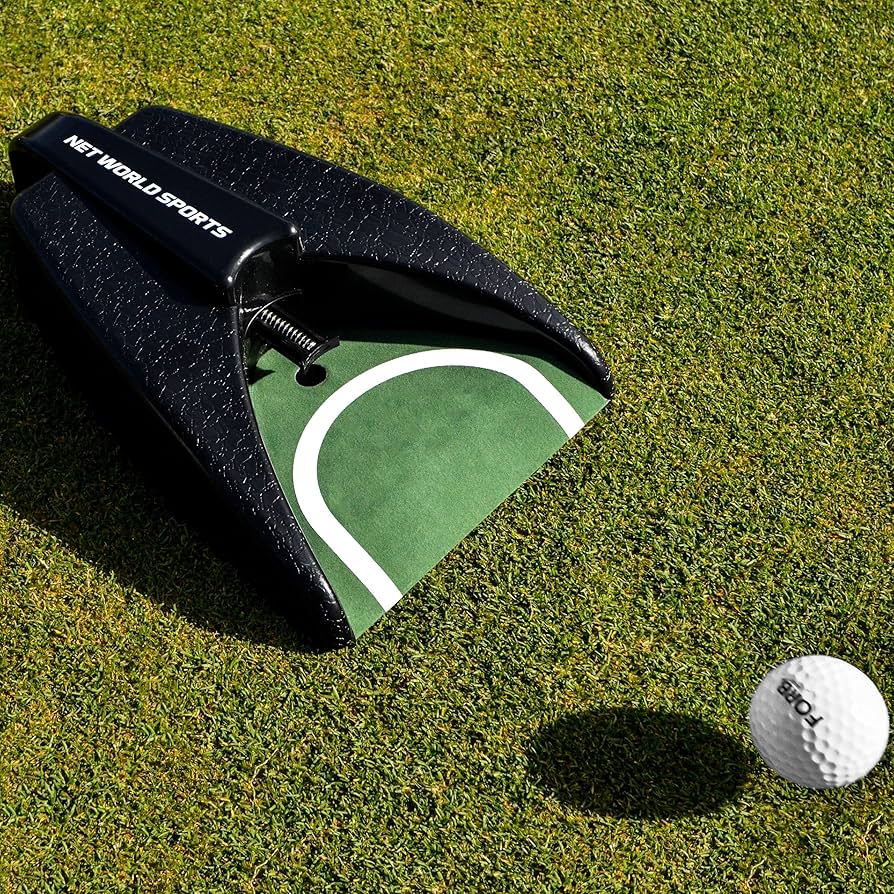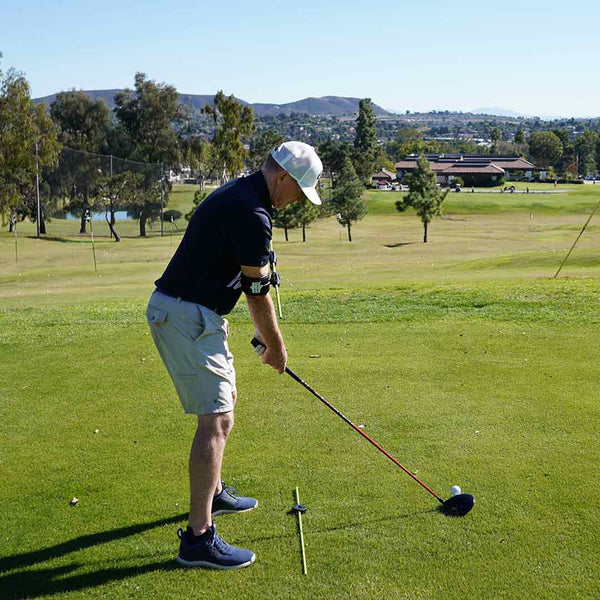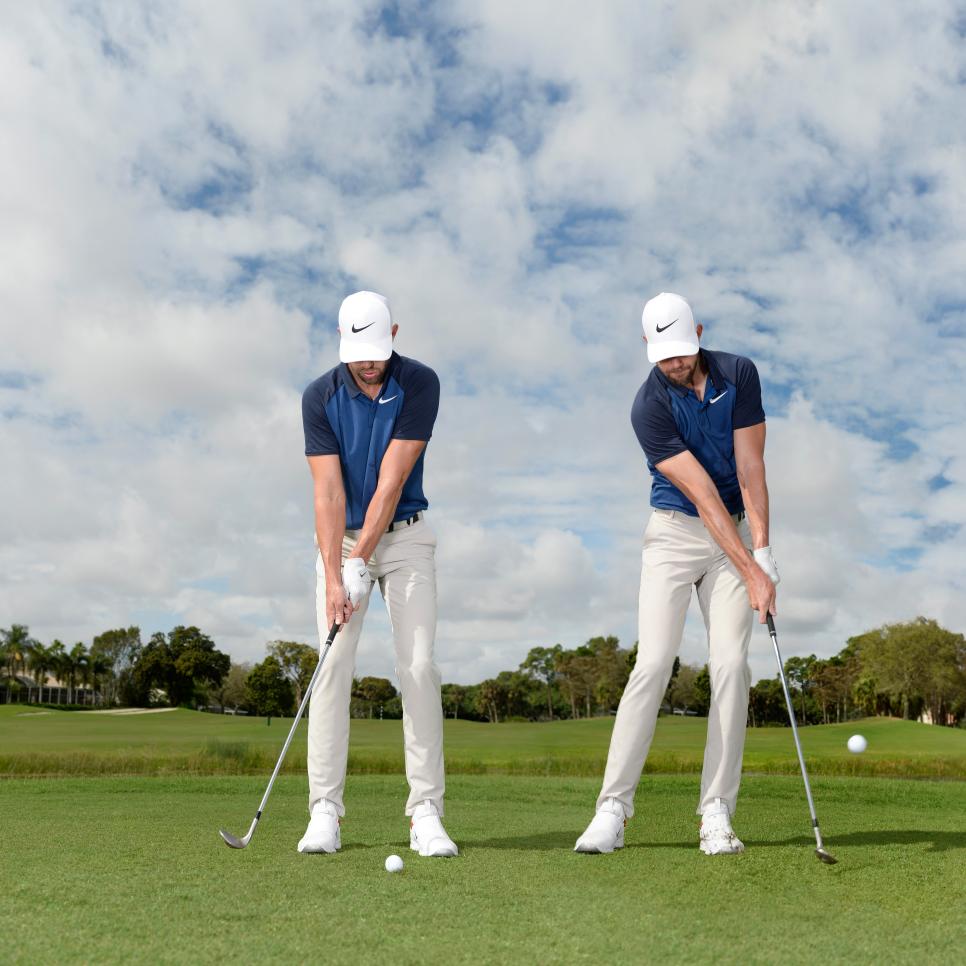I. Introduction

A. The frustration of topping the ball
There’s nothing quite as frustrating as watching your golf ball top along the ground, especially when you know you’re capable of hitting a solid shot. It can feel like a wasted opportunity, and it often leaves you wondering where you went wrong. Topping the ball can be a source of immense frustration for golfers, but it’s important to remember that it’s a problem that can be overcome with the right approach.
B. The importance of proper technique
Proper technique is crucial in golf, and it can make all the difference in your game. Every aspect of your swing, from your grip to your follow-through, plays a role in the outcome of your shot. When it comes to avoiding topped shots, making sure your technique is sound is essential. By understanding the key principles of a good golf swing and making the necessary adjustments, you can improve your consistency and avoid topping the ball.
II. Understanding the Causes
A. Incorrect ball position
One common cause of topping the ball is having the incorrect ball position at address. If the ball is too far forward in your stance, you might find yourself hitting the top of the ball instead of making solid contact. On the other hand, if the ball is too far back, you might have trouble getting under it and sending it upwards.
To address this issue, try experimenting with your ball position during practice sessions. Pay attention to where the ball is in your stance when you consistently make good contact, and use that as a guide for future shots. It’s a simple adjustment that can make a big difference in your ball-striking ability.
B. Early hip movement
Another common mistake that can lead to topping the ball is moving your hips too early in the downswing. If your hips slide forward before your upper body has had a chance to turn and your hands have had a chance to lead the clubhead, you might find yourself making thin contact with the ball or topping it altogether.
To correct this issue, focus on initiating the downswing with your upper body and allowing your hands to naturally lead the clubhead towards the ball. This will help you maintain a proper angle of attack and make solid contact with the ball at impact.
C. Lifting the head during the swing

Lifting your head during the swing is a common mistake that can lead to topped shots. When you lift your head, your body tends to straighten up, throwing off the angle of your swing and causing you to hit the top of the ball.
To avoid this, focus on keeping your head down and your eyes on the ball throughout the entirety of your swing. This will help you maintain a consistent posture and make solid contact with the ball.
III. Fixing the Ball Position
A. Proper setup for irons and woods
One of the keys to avoiding topped shots in golf is to ensure that the ball is positioned correctly in your stance. When using irons, the ball should be positioned slightly ahead of center, allowing for a descending strike to take the ball cleanly off the turf. For woods, the ball should be placed closer to the front foot to allow for a sweeping motion that enables the club to catch the ball cleanly.
To practice proper ball position, spend time on the driving range experimenting with different setups. Pay attention to the trajectory and contact of your shots, and make adjustments to your ball position until you find the optimal setup for both your irons and woods.
B. Practicing with alignment aids
To help improve your ball position, consider using alignment aids during your practice sessions. Alignment sticks, training aids, or even a simple club laid on the ground can provide visual feedback on the positioning of the ball in your stance.
By using these aids, you can develop a more consistent setup, making it easier to find the correct ball position for various clubs. This visual feedback can be invaluable in reinforcing proper ball position and ensuring that you consistently make solid contact with the ball.
C. Monitoring ball position during the swing

In addition to setting up with the correct ball position, it’s essential to monitor and maintain that position throughout the swing. Many golfers have a tendency to unknowingly move the ball position during the swing, leading to inconsistent contact and topped shots.
Spending time on the range and working on your swing while paying specific attention to the ball position can help you develop the muscle memory needed to maintain a consistent setup. Over time, this will lead to more consistent contact and better ball-striking ability.
IV. Stabilizing Hip Movement
A. Exercise to develop hip stability
Stabilizing hip movement is essential for a consistent golf swing and can help prevent topped shots. One effective way to improve hip stability is through targeted exercises that strengthen the muscles around the hips. These exercises, such as lunges, squats, and hip bridges, can improve stability and control, allowing for a more consistent and powerful rotation in the swing.
Incorporating these exercises into your fitness routine can help you develop the strength and stability needed to prevent excessive hip movement, leading to more consistent ball-striking.
B. Focus on the lower body during the backswing
During the backswing, it’s important to focus on the lower body to help stabilize hip movement. By maintaining a stable lower body and resisting any lateral movement, you can ensure that your hips remain centered and positioned correctly for a solid downswing.
Practice your backswing while paying specific attention to your lower body, ensuring it remains stable and does not sway excessively. This will help maintain the proper sequence of movements, leading to more consistent ball striking.
C. Engaging the core for better control
Engaging the core muscles can also contribute to stabilizing hip movement and preventing topped shots. A strong and engaged core provides the stability and control necessary to maintain a consistent swing plane and prevent excessive hip movement.
Focus on engaging the core during your swing by practicing exercises that target these muscles, such as planks and rotational movements. By developing a strong core, you can improve control over your swing and prevent topping the ball.
V. Maintaining Head Position
A. Drills to keep the head steady
One of the common causes of topping the ball in golf is lifting the head during the swing. This can result in a loss of posture and a poor angle of attack, leading to topped shots. To address this issue, it’s important to practice drills that promote keeping the head steady throughout the swing.
One effective drill is to place a golf ball directly under your chin and hold it in place as you make practice swings. This encourages you to maintain a stable head position and promotes a consistent swing plane. By incorporating this drill into your practice routine, you can develop the muscle memory needed to keep your head steady during the swing, leading to better ball striking.
B. Focus on following through with the swing
Maintaining a steady head position during the follow-through is crucial to preventing topped shots. Many golfers tend to lift their heads prematurely as they reach impact, leading to inconsistent ball contact. By focusing on following through with the swing and keeping your head down and steady until the club has fully completed the motion, you can improve your chances of making solid contact with the ball.
During practice sessions, pay specific attention to your follow-through, ensuring that your head remains steady and focused on the ball until the club has completed its motion. By reinforcing this habit, you can reduce the likelihood of topping the ball and achieve more consistent ball striking.
C. Visualization techniques
Visualization techniques can also be helpful in maintaining a steady head position throughout the swing. Before addressing the ball, visualize keeping your head steady and maintaining eye contact with the ball through impact and the follow-through. This mental imagery can help reinforce the importance of head position and provide a clear focus during your swing.
In addition, visualization can help you anticipate the proper position of your head throughout the swing, making it easier to maintain stability and prevent common mistakes that lead to topped shots.
In conclusion, topping the ball in golf can be a frustrating experience, but it’s a problem that can often be corrected with the right adjustments to your technique. By understanding the common causes of topped shots and making the necessary changes to your swing, you can improve your ball-striking ability and enjoy more consistent results on the course. With practice and patience, you can overcome the challenge of topping the ball and take your game to the next level.
